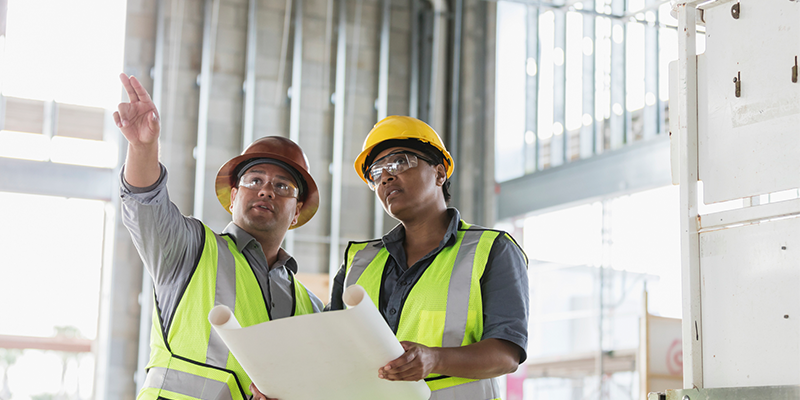From design/build condos to built-to-suit warehouses, one factor remains the highest priority regardless of the project type: the approach to upholding the highest level of safety. Although safety exists as a core value across all areas of the construction industry, the increased risk of serious injuries or fatalities persists. In fact, construction workers are ranked number four on the United States Bureau of Labor Statistics’ list of occupations with the most fatality rates.
Considering this heightened risk, it’s important for every team member, from subcontractors to superintendents, to take responsibility for safety compliance, empowering others to take responsibility for not only their own actions but the actions of those around them. To help enhance safety efforts for the project from start to finish, safety leaders are focusing on ways to implement safety standards within each component of the building’s design. Although this approach requires comprehensive planning and strategizing on the front end, it is intended to reduce and mitigate hazards before they become issues. Keeping this idea in mind, the following are a few actionable methods for managing projects designed around safety compliance.
Conduct an Initial Risk Assessment
No two job sites are the same. From crowded pedestrian walkways to dangerous existing infrastructures, each project requires specific layouts, materials and processes to be fully functional both during and after construction. Given the unique nature of each site, a detailed risk assessment must be conducted before any other design and building activities begin. During this initial assessment, careful consideration should be placed on the overall flow as it relates to the people, processes and equipment located on or near the construction site.
Develop Site-specific Safety Plans
The initial risk assessment also serves as the foundation for developing site-specific safety plans. By creating a detailed plan that aligns with the distinct job site needs and requirements, the team can understand, identify and address any safety issue that can occur on a specific project. A well-developed site-specific safety plan outlines all project procedures and guidelines related to safety, including clearly outlined roles and responsibilities, personal protective equipment (PPE) requirements, mandatory training programs, audit and inspection information, an emergency response plan, reporting requirements and more. This proactive approach not only demonstrates a company’s commitment to making safety the top priority on every job site, but it also serves as a strategic way to promote compliance and minimize the likelihood of serious accidents.
Reinforce Fall Protection Solutions
According to the Occupational Safety and Health Administration (OSHA), falls are the leading cause of work-related injuries and deaths on job sites. This fact elevates the importance of fall protection standards when planning a project centered on safety excellence. By proactively approaching fall protection with tools such as guardrails, handrails, safety nets, harnesses, toe-boards and floor hole covers, workers can stay protected from serious injuries or fatalities that result from a devastating fall. Implementing fall protection solutions goes beyond protecting workers. By creating an environment that supports physical well-being, workers are more confident in completing daily tasks, resulting in increased efficiency and productivity overall.
Select High-quality, Durable Building Materials
Certain building materials create greater health and safety concerns for both construction workers and future building occupants. Some materials contain toxic components that present an increased risk of flammability, chemical exposure and other severe health complications. Although a seemingly minor aspect when it comes to overall construction safety, these materials can have serious consequences long after construction is complete. Be sure to investigate the potential hazards of each material used on a project, from paints and adhesives to doors and windows.
Durability is another important consideration when selecting safety-focused building materials. High-quality materials will be more likely to withstand adverse weather conditions and environmental changes, resulting in less frequent maintenance that could create an opportunity for worker accidents and injuries.
Universally, refining the approach to safety on construction sites will remain an ongoing priority for industry leaders and frontline workers actively planning, designing and building success. To follow through on this priority, a safety-focused mindset is ingrained into each phase of the project, from procurement to design. By making safety a key design element, both the project and those bringing it to life will benefit from a culture where safety is not just a goal but a shared, nonnegotiable value guiding each aspect of the work from preconstruction to closeout and beyond.








